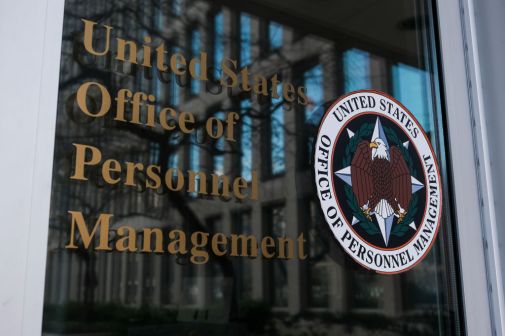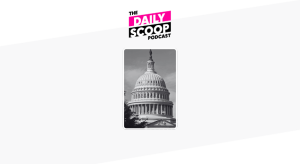How the Biden administration is tackling diversity in federal AI hiring

The Biden administration’s plan to bolster the federal civilian workforce with more than 500 artificial intelligence professionals by the end of fiscal year 2025 could face a challenge when it comes to another one of its priorities: promoting a workforce that looks like America.
While data is limited, the broader AI workforce and pipeline appears to have the same demographic underrepresentation issues that STEM careers experience, lacking diversity in terms of gender, race and ethnicity. And just like the private sector, the government has historically struggled with diversity in STEM roles.
Aware of that landscape, the Biden administration says it’s making efforts to promote diversity in AI hiring, including encouraging agencies to target their outreach for open positions, underscoring the need for “AI-enabling” jobs, and engaging with groups aimed at diversifying technologists. Ultimately, what hangs in the balance of those actions is having a workforce that will bring a variety of experiences and perspectives to the table when managing the application of the booming technology — something the administration, experts, and advocates have stressed.
“If we don’t have a diverse group of people building something that needs to serve a larger group of people, we’re going to do ourselves a disservice, and there’s going to be a lot of unhappy people that can’t benefit from something that should be able to be accessible to all,” said Lisa Mae Brunson, founder of Wonder Women Tech, an organization aimed at helping advance women, people of color, and other underrepresented communities in tech and science fields.
Already, the federal government is hiring for artificial intelligence positions and seeing interest in open roles. Since President Joe Biden’s October executive order on AI, more than 150 people have been hired in AI and AI-enabling roles, according to a report to the White House by the AI Tech and Talent Task Force. As of March, applications for AI and AI-enabling roles in 2024 have doubled when compared to similar periods in the previous two years, the report said.
That report also underscored the need for diversity, noting that the task force has “prioritized recruiting from a diverse pool of qualified candidates,” consistent with previous Biden executive orders that established the White House Gender Policy Council and outlined actions to promote diversity in federal government hiring.
According to the task force, those efforts recognize “the need for technical experts who can work to mitigate bias in AI systems and the overall underrepresentation of women, people of color, first-generation professionals and immigrants, individuals with disabilities, and LGBTQI+ individuals in the STEM field as a whole.”
Active recruiting
As AI hiring efforts move forward, officials are stressing the importance of recruitment.
Kyleigh Russ, a senior adviser to the Office of Personnel Management’s deputy director, told FedScoop the administration is trying to get away from a passive “post and pray” method of hiring — meaning the job gets posted and agencies hope the right person applies. Instead, agencies are encouraged to shift to “active recruiting.”
Often the volume of applications isn’t the problem for federal government positions, Russ said, but there is a desire to make sure the right people and a diverse group of people are applying.
Active recruiting could mean reaching out to someone on LinkedIn, recruiting directly from minority-serving institutions, or engaging in events like its recent virtual job fair.
Russ described the push for active recruiting as a “change in practice” and said OPM is working on a training program that will address active recruiting. That program, which it’s collaborating on with the U.S. Digital Service and the Office of Performance and Personnel Management, will be aimed at teaching human resources how to recruit and hire technologists, as it’s a specialized field with “unique challenges,” Russ said.
During a panel about women in AI last month at Scoop News Group’s AI Talks, USDS Administrator Mina Hsiang pointed to the concept of telling stories about use cases and problems they’re trying to solve as a tool for hiring.
“Different people want to solve different problems that they see in their communities or in their lives,” Hsiang said. “And so the more that we can connect this to problems that people care about, and show how these are relevant pieces of that, the more people will be motivated to sort of move into those fields.”
Hiring a diverse federal workforce across the government has been an important issue for the Biden administration since its early days. In June 2021, the White House issued an executive order to advance diversity, equity and inclusion in the federal workforce. That order directed agencies to assess the state of diversity, equity and inclusion in their workforces, and took steps to advance things like pay equity.
AI-enabling
The administration is also highlighting the difference between AI and AI-enabling jobs, which includes roles that are less technical and broadens the pool of candidates.
Roles that fall into the enabling category include things like data scientists, data analysis, and technical recruiters, Russ said. She noted that the administration has been stressing that it’s looking for both categories of roles in its recruiting campaign and specifically with the recent Tech to Gov job fair.
That April 18 virtual fair, which is similar to others Tech to Gov has held before, yielded registrations from over 1,300 people representing all 50 states, according to numbers provided by the nonpartisan and nonprofit Tech Talent Project that coordinates the Tech to Gov coalition. The event focused on senior-level technologist roles at the roughly 15 federal agencies and four state agencies that participated.
Jennifer Anastasoff, executive director of the Tech Talent Project, similarly underscored that both AI and AI-enabling roles are needed. For government hires, Anastasoff said it isn’t required “that every one of the folks who’s inside is someone who has deep expertise in the most technical of technical AI.”
“What we need are folks who can really help make sure that all of our systems — technically, data and otherwise — are really focused on the people who are supposed to be receiving those services,” said Anastasoff, who was a founding member of USDS.
Anastasoff said the administration’s work with Tech to Gov shows a “level of commitment” to diversity in the technology workforce, as the coalition’s members are interested in that issue. Tech to Gov’s members include organizations like the U.S. Digital Response, Coding it Forward, and AnitaB.org.
There’s also more work planned with groups trying to diversify tech. Deputy Federal Chief Information Officer Drew Myklegard told FedScoop the administration is planning a hiring push at this year’s Grace Hopper Celebration, a conference for women and non-binary people in technology that’s organized by AnitaB.org.
“It’s 30,000 individuals that come together who are excited, young, extremely diverse,” Myklegard said, “and we think we have a very compelling pitch why they should come and work for the government in AI.”
Additionally, there’s action being taken to support a diverse pipeline of AI professionals outside government. The National Science Foundation, for example, has a program targeted at diversifying the AI research community, including funding research and education at minority-serving institutions. Biden’s AI executive order directed NSF to continue its support of AI-related education and workforce development in an effort to “foster a diverse AI-ready workforce.”
“We know that the existing research institutions, and some of the other institutions, are building curriculum, but this curriculum has to be everywhere because talent and ideas are anxious to engage, and that’s a deep commitment from NSF,” Sethuraman Panchanathan, the agency’s director, told FedScoop.
Diversity data
The growth of the AI workforce comes as STEM careers more broadly have historically struggled with diversity — both in the private sector and the federal government.
The U.S. Equal Employment Opportunity Commission, for example, found that women made up less than 30% of federal STEM jobs in fiscal year 2019. A November 2023 report by the Union of Concerned Scientists found that while the shares of scientists in the federal government grew more racially and ethnically diverse between 2017 and 2022, there were decreases in certain groups and inequities were still present in the STEM workforce at specific agencies.
When it comes to the federal AI workforce, specifically, there aren’t yet figures. The government, through OPM, is still in the process of getting a head count of federal AI and AI-enabling employees. A recent publication from OPM that describes and defines those AI roles will aid those efforts to get a sense of the workforce within the government. Russ said that will likely include demographic data.
Data on the AI workforce is a challenge outside of government as well. Nestor Maslej, a research manager at Stanford’s Institute for Human-Centered Artificial Intelligence who manages the AI Index, said there isn’t as much data on diversity in AI compared to economic or technical performance data, and emphasized the need to address that.
“Although things are getting better, we really would want to kind of create a world in which there is more data — there is much more reporting,” Maslej said. “Because I think data is the first step in actually understanding what’s going on, what the landscape is like, and what kind of changes are required.”
Stanford’s most recent AI Index report, for example, uses data on computer science graduates to paint a picture of the AI workforce pipeline. That data shows that men represent roughly 3 in 4 bachelor’s, master’s, and PhD computer science graduates in North America. Those students are predominantly white, though Asian graduates also make up a substantial portion in each degree type as well.
If people are able to see that the government has a diverse and representative AI workforce, Maslej said it could generate more confidence from the public in its regulation of that technology.
Looking forward
While the hiring push is still in its early stages, there are some suggestions on how to improve efforts.
Wonder Woman Tech’s Brunson said she’d like to see the administration be more vocal about a commitment to diversity with its AI hires, especially as the tech industry has seen a rollback of some diversity, equity and inclusion initiatives.
Brunson said she now doesn’t have the resources to be able to tell people looking for jobs where to go, and many people who are interested are trying to teach themselves about AI. “Where is there an opportunity … to train up these diverse candidates so that the future of AI talent looks different than what it looks like today?” Brunson said.
But there is also optimism that diverse hiring is achievable. Seth Dobrin, founder and CEO of Qantm AI and the author of a forthcoming book on AI strategy, talent and culture, said that while the talent pool of people building AI models isn’t particularly diverse, the pool that the Biden administration will likely hire from is separate from that. He said that in his experience “it’s not as bleak as some of these studies show.”
Dobrin, who was IBM’s first global chief AI officer, emphasized the importance of intentionally crafting job postings and descriptions so they are more inclusive to diversity.
“It’s not hiring for a lowest common denominator,” he said. “It’s making sure that you craft your job descriptions appropriately, that you don’t interview until you have a diverse pool of candidates, and then you hire the best person from that pool.”
FedScoop reporter Caroline Nihill contributed to this story.






